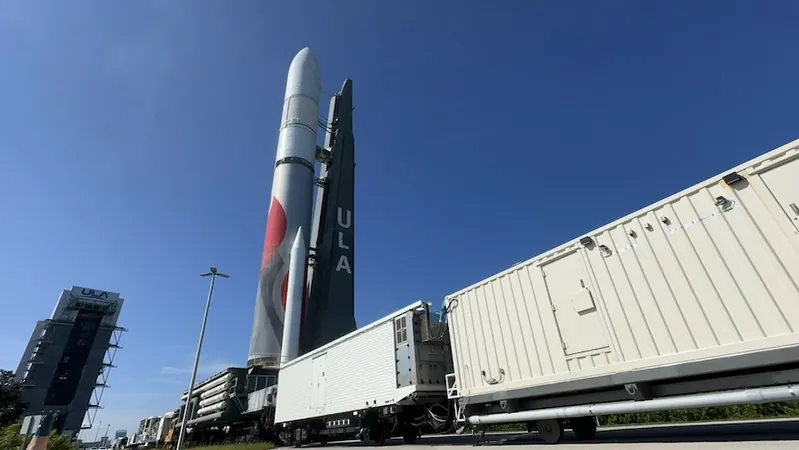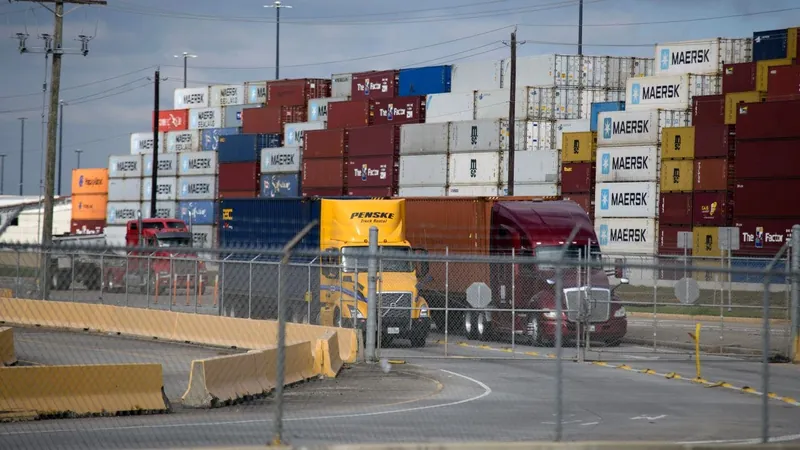
ULA's Vulcan Rocket Rolls to Launch Pad: A Giant Leap for National Security Missions!
2024-09-30
Introduction
In an exhilarating step forward for space exploration, United Launch Alliance (ULA) has successfully rolled its groundbreaking Vulcan rocket to the launch pad at Space Launch Complex 41 in Florida. This marks a pivotal moment as the company prepares for the vehicle's second test flight, a mission dubbed Cert-2, which is crucial for launching national security payloads for the U.S. Space Force and the National Reconnaissance Office.
Launch Details
Scheduled for liftoff on Friday, October 4, within a three-hour launch window starting at 6 a.m. EDT (10:00 UTC), the Vulcan rocket is anticipated to make history once again. The rocket, towering at 202 feet (61.6 m) and weighing approximately 1.5 million pounds (663,000 kg) when fully fueled, successfully reached its launch pad after a 550-meter (0.34 miles) journey under clear skies, following an earlier threat of inclement weather from Hurricane Helene.
Upcoming Tests
Following the remarkable rollout on Monday, September 27, the rocket will undergo a comprehensive tanking test known as a 'wet dress rehearsal' on Tuesday. Notably, ULA plans to skip the static fire test typically performed on the two BE-4 engines at the base of the rocket before launch. This innovative approach highlights ULA's confidence in the Vulcan's capabilities and marks a shift in traditional launch protocols.
Mission Objectives
The Cert-2 mission will carry an inert payload, focusing on crucial experiments and technology demonstrations designed to advance development for future missions of the Centaur 5 upper stage. ULA President and CEO Tory Bruno mentioned that this flight aims to characterize the performance and limits of Centaur 5, particularly concerning its cryogenic propellant management during prolonged durations in space.
Challenges and Adaptations
Beneath the surface of this mission lies a web of intricacies: ULA decided not to include a customer payload due to delays with Sierra Space's Dream Chaser spaceplane, which was to be launched to the International Space Station (ISS). Despite these changes, ULA’s commitment to advancing technologies for governmental missions remains steadfast, presenting a perfect opportunity to collect data that will be vital for both ULA and the U.S. Space Force.
Importance of Cert-2 Flight
A successful completion of Cert-2 is paramount for ULA. It not only enhances their credibility for future launches but also positions them as strong contenders for NASA's upcoming missions amidst increasing competition from commercial partners like SpaceX and Northrop Grumman. Tim Dunn, senior launch director at NASA's Kennedy Space Center, emphasized the importance of this mission: 'A second Cert flight further demonstrates the rocket's reliability and reliability is the cornerstone of national security launches.'
Path to Certification
However, a clean flight does not guarantee immediate certification for crucial missions. U.S. Space Force officials have made it clear that a thorough analysis of the data collected post-flight is mandatory to ensure the rocket meets all performance expectations.
Future Prospects
As ULA eyes upcoming launches such as USSF-106 and USSF-87, slated for the end of the year, they are simultaneously working on expanding their launch infrastructure, preparing for a future where the Vulcan rocket is crucial for an array of missions — not only for national security but also in fostering a burgeoning low Earth orbit economy.
Conclusion
So, as we count down to the exciting Cert-2 mission, the stakes couldn't be higher. Will ULA's Vulcan rocket soar to new heights, solidifying its role as a pillar of America’s space endeavors? Stay tuned for what promises to be a thrilling chapter in space history!




 Brasil (PT)
Brasil (PT)
 Canada (EN)
Canada (EN)
 Chile (ES)
Chile (ES)
 España (ES)
España (ES)
 France (FR)
France (FR)
 Hong Kong (EN)
Hong Kong (EN)
 Italia (IT)
Italia (IT)
 日本 (JA)
日本 (JA)
 Magyarország (HU)
Magyarország (HU)
 Norge (NO)
Norge (NO)
 Polska (PL)
Polska (PL)
 Schweiz (DE)
Schweiz (DE)
 Singapore (EN)
Singapore (EN)
 Sverige (SV)
Sverige (SV)
 Suomi (FI)
Suomi (FI)
 Türkiye (TR)
Türkiye (TR)